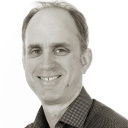

Final phase of Wallasea restoration underway – and it’s breaking new ground!
We are delighted to share that work has now started on the final phase of the RSPB’s major coastal wetland restoration initiative on Wallasea Island (Essex).
Last month, contractors (Bam Nuttall) ‘broke ground’ on the earthworks with a view to completing this last stage during 2018. This is exciting not least because, when this phase is complete, an area twice the size of the City of London (nearly 800 hectares) will have been transformed into a nature reserve for rare and threatened wildlife.
More than that however, this final phase of the RSPB’s work is going to be very impressive in its own right. In particular, it will include the creation of a large expanse (132 hectares) of shallow and seasonally-variable saline lagoon habitats that will be novel in this country. These ‘dynamic lagoons’ will be surrounded a further 137 hectares of brackish and freshwater marshland.
These habitats, and the dynamic lagoons especially, are designed to mimic the kind of coastal marshes and saltpans that are more typically found in the Camargue of southern France or ‘Las Salinas’ in southern Spain (including the Doñana National Park). They will include areas of cracked mud and salt-tolerant vegetation that will support very large numbers of feeding and breeding waterbirds as well as many other species. Beyond just supporting birds which already overwinter and nest in the UK, though, it is expected that this Mediterranean-style wetland (assisted by the climate in Essex) will provide an environment that is suitable for southerly ‘colonist’ species such as Spoonbill, Black-winged Stilt and Kentish Plover where they seek to move north in response to changing climatic conditions.
The Wallasea Island Wild Coast Habitat Plan 2018 (click to enlarge)
Once completed, the final phase will add 269 hectares of wetland to the 514 hectares already restored at Wallasea Island since 2006. Like the rest of the restored site, the new wetland complex will contain circular visitor routes allowing the whole of Wallasea to become viewable from a range of locations many of which will have large areas of wetland visible on both sides of them.
Given its size and the length of the permissive footpaths, this is a site that visitors could spend a whole day walking around, and still not have enough time to see all of the birds that will be present.
Wallasea Island is the largest and most ambitious coastal habitat restoration ever undertaken in the UK. The work that has been done here is a model for sustainable coastal habitat creation and natural flood risk management and a demonstration of how coastal areas can be future-proofed against sea-level rise while at the same time delivering benefits for the environment and society. Truly working with nature.
We have provided technical support to the RSPB since the inception of the Wallasea Island Wild Coast project through to the present day.
Learn more about our input on the Wallasea Island Wild Coast project.




